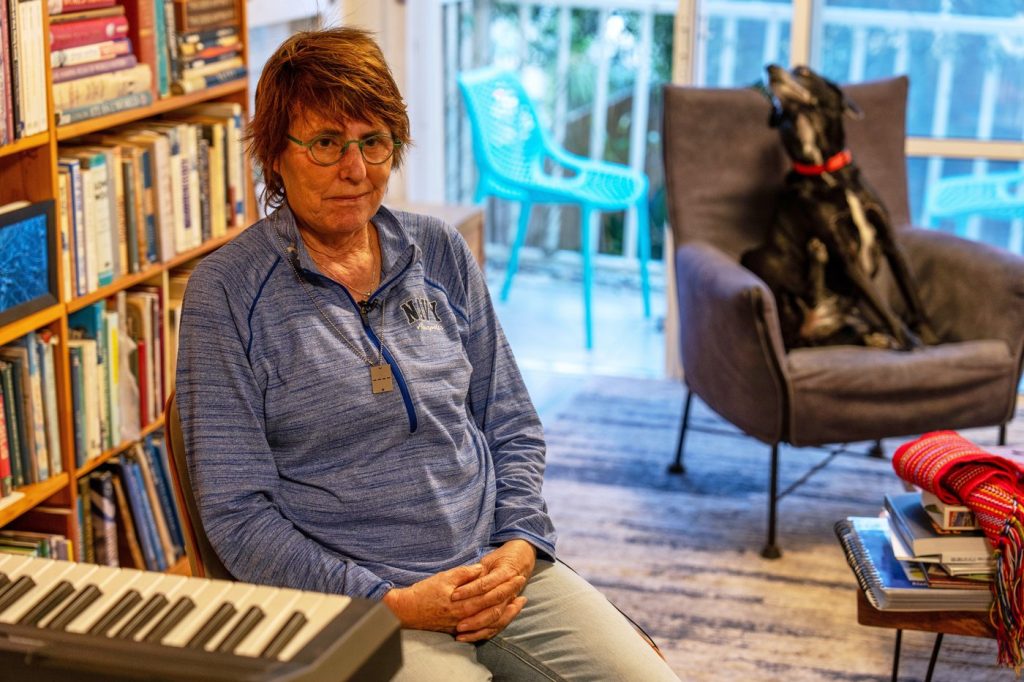ZICHRON YAACOV, Israel (AP) — Tal Hartuv bears a jagged scar on her chest, indicative of the 18 stab wounds she sustained during a brutal attack outside Jerusalem in 2010 that claimed the life of her friend, American tourist Kristine Luken. On her chest, alongside a 7-centimeter (3-inch) scar, lies a dog tag that reads, “Our heart is captive in Gaza,” reflecting public sentiment supporting a ceasefire deal that would exchange Israeli hostages for Palestinian prisoners.
On Friday, as many celebrated a ceasefire deal between Israel and Hamas after two years of war, Hartuv came across the list of Palestinian prisoners earmarked for release. Among the names, she saw Iyad Hassan Hussein Fatafta, one of three men convicted of attempting to murder her and responsible for Luken's death.
Victims' families like Hartuv's face a haunting dilemma: should the perpetrators of such heinous acts be released, potentially endangering future lives, or should Israeli hostages remain in captivity? Hartuv expressed complex emotions, stating, “I can feel thrilled and hopeful and joyful that our hostages are coming home. But I can still feel angry, I can feel betrayed, I can feel hollow. They’re not mutually exclusive.” Despite her mixed feelings, no one from the Israeli government contacted Hartuv to inform her about Fatafta’s potential release; she learned of it through a journalist.
By Monday, Hamas plans to commence the release of 48 Israeli hostages, with around 20 believed to be alive. In exchange, Israel is to release approximately 2,000 Palestinians, which will include senior militants convicted of serious attacks, along with those convicted of lesser offenses. The potential of releasing high-profile convicts brings to light troubling implications for victims' families.
Reflecting on a past incident, 22 years ago, when a suicide bomber targeted Bus 37 in Haifa, killing 17, including nine children, Yossi Zur, whose son Asaf was among the victims of a 2003 bombing, had long campaigned against the release of imprisoned militants. However, amid the significant number of hostages captured in the Oct. 7, 2023, attack, he has shifted his perspective and stated, "We need to bring them back." This attack resulted in the deaths of approximately 1,200 people and the abduction of 251.
In previous exchanges, such as the one for Gilad Shalit, where 1,027 Palestinian prisoners were released, public sentiment was polarized. Many victims' families, including Zur, felt heartbroken witnessing the release of those convicted of heinous acts. Despite past activism against such deals, Zur acknowledges the pressing need to prioritize the return of hostages this time.
As the current situation unfolds, some victims' families express concerns about Israel's security and the precedent set by negotiating with militants. Ron Kehrmann's 17-year-old daughter Tal, who was also killed in the sinking of Bus 37, expresses a staunch opposition to prisoner releases, emphasizing the importance of deterrence in preventing future attacks. “Israel needs to break the equation of releasing hostages via releasing terrorists,” he concluded.
In grappling with her own feelings, Hartuv reflects on the emotional turmoil tied to the potential release of her attackers. She acknowledges her anger and feelings of betrayal while simultaneously striving to maintain empathy for the families of the hostages. “It creates that room for empathy and reminds me there’s another side of the coin,” she said, advocating for a nuanced understanding of the crisis that encompasses both the anguish of victims' families and the plight of hostages.
Through these challenging dialogues, the emotional landscape reveals the complex interplay of grief, justice, and the harsh realities of the Israeli-Palestinian conflict, illustrating the struggle to reconcile personal pain with collective aspirations for peace.










